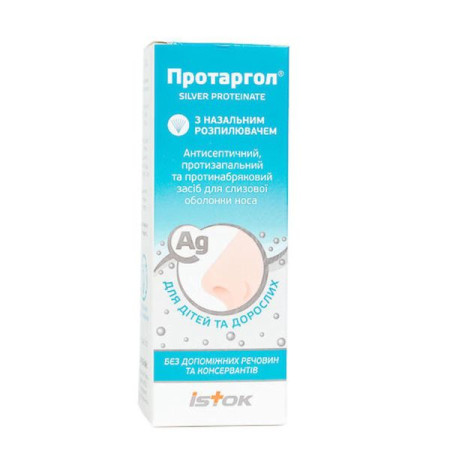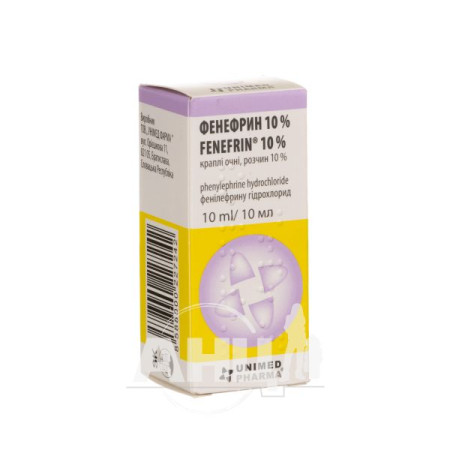Rezlod eye drops solution 2% dropper bottle 5 ml

Instructions for use Rezlod eye drops solution 2% dropper bottle 5 ml
Composition
active ingredient: dorzolamide;
1 ml of solution contains 20 mg of dorzolamide (as dorzolamide hydrochloride);
Excipients: mannitol (E 421), benzalkonium chloride, hydroxyethylcellulose, sodium citrate, sodium hydroxide, water for injections.
Dosage form
Eye drops, solution.
Main physicochemical properties: transparent, slightly viscous, colorless aqueous solution.
Pharmacotherapeutic group
Antiglaucoma drugs and miotics. Carbonic anhydrase inhibitors. Dorzolamide.
ATX code S01E C03.
Pharmacological properties
Pharmacodynamics. Rezlod contains dorzolamide hydrochloride, a potent inhibitor of human carbonic anhydrase II (CA-II). Following topical ophthalmic administration, dorzolamide reduces elevated intraocular pressure, whether or not associated with glaucoma, which is a major risk factor in the pathogenesis of optic nerve damage and visual field narrowing. Dorzolamide does not cause mydriasis and reduces intraocular pressure without the development of adverse reactions such as night blindness and accommodation spasm. Dorzolamide has minimal or no effect on heart rate or blood pressure.
Since the mechanism of action of dorzolamide differs from that of beta-adrenergic blockers, when used in combination as concomitant therapy, a synergistic effect of both components is observed, accompanied by an additional reduction in intraocular pressure.
Pharmacokinetics: In contrast to oral carbonic anhydrase inhibitor preparations, topical dorzolamide acts directly in the eye at significantly lower doses and therefore has less systemic effect. In clinical studies, this resulted in a reduction in intraocular pressure without the associated acid-base disturbances or electrolyte disturbances that are common with oral carbonic anhydrase inhibitor preparations.
When applied topically, dorzolamide reaches the systemic circulation. With prolonged use, dorzolamide accumulates in erythrocytes due to selective binding to CA-II, while extremely low concentrations of free active substance are maintained in the blood plasma. Dorzolamide forms one N-deethylated metabolite, which inhibits CA-II to a lesser extent than the parent compound, but also inhibits the less active isoenzyme CA-I. The metabolite also accumulates in erythrocytes, where it binds predominantly to CA-I. Dorzolamide is moderately bound to plasma proteins (approximately 33%) and is excreted in the urine (mainly unchanged), as is its metabolite. After discontinuation of the drug, there is a nonlinear washout of dorzolamide from erythrocytes, which initially leads to a rapid decline in dorzolamide concentrations, followed by a slower elimination phase with a half-life of approximately 4 months.
When administered orally, which simulated the maximum systemic exposure of dorzolamide after chronic topical ophthalmic administration, steady state was reached within 13 weeks. At steady state, virtually no free drug or metabolite was detected in plasma; inhibition of CA in erythrocytes was less than is considered necessary for pharmacological effects on renal function or respiration. Similar pharmacokinetic results were observed after chronic topical administration of dorzolamide.
However, in some elderly patients with impaired renal function (creatinine clearance 30-60 ml/min), metabolite concentrations in erythrocytes were higher, although this was not accompanied by significant differences in carbonic anhydrase inhibition; no clinically significant systemic adverse reactions directly related to these phenomena were observed.
Indication
The drug Rezlod is indicated:
- for monotherapy in patients with elevated intraocular pressure for whom beta-adrenergic blockers are contraindicated, or in the absence of response to beta-adrenergic blocker therapy in the treatment of:
- intraocular hypertension;
- open-angle glaucoma;
- pseudoexfoliative glaucoma;
- as an adjunctive therapy when using beta-adrenergic blockers.
Contraindication
Hypersensitivity to dorzolamide or to any of the excipients of the drug.
Dorzolamide has not been studied in patients with severe renal impairment (creatinine clearance < 30 ml/min) or hyperchloremic acidosis. Since dorzolamide and its metabolites are excreted primarily by the kidneys, the use of the drug is contraindicated in such patients.
Interaction with other medicinal products and other types of interactions
No specific drug interaction studies have been conducted.
Interactions between dorzolamide and miotics or adrenergic receptor agonists during antiglaucoma therapy have not been fully studied.
Dorzolamide is a carbonic anhydrase inhibitor that is absorbed into the systemic circulation even when applied topically. No acid-base disturbances have been reported in clinical studies with its use. However, therapy with oral carbonic anhydrase inhibitors has been associated with similar disturbances, which in some cases has led to drug interactions (e.g. toxicity with high doses of salicylates). Therefore, this potential risk to patients should be considered when using the drug.
Application features
Dorzolamide has not been studied in patients with hepatic impairment and should be used with caution in these patients.
Treatment of patients with acute attacks of angle-closure glaucoma requires therapeutic intervention in addition to therapy with ophthalmic antihypertensive drugs. Dorzolamide has not been studied in patients with acute attacks of angle-closure glaucoma.
Dorzolamide is a sulfonamide and is therefore absorbed into the systemic circulation even when applied topically. Therefore, the same types of adverse reactions as those seen with sulfonamides may occur with topical application of the drug. If signs of serious hypersensitivity reactions occur, the drug should be discontinued.
Treatment with oral carbonic anhydrase inhibitors, particularly in patients with a history of urinary tract stones, has been associated with the development of urolithiasis due to acid-base disturbances. Although acid-base disturbances have not been observed with dorzolamide, there have been isolated reports of urolithiasis in patients receiving such treatment. Due to systemic absorption, patients with a history of urinary tract stones may be at increased risk of developing urolithiasis while receiving dorzolamide.
If allergic reactions (e.g. conjunctivitis or eyelid reactions) occur, discontinuation of treatment should be considered.
Since there is a potential for synergistic systemic effects with the concomitant use of oral carbonic anhydrase inhibitors and dorzolamide, such use is not recommended.
Cases of corneal edema and irreversible corneal decompensation have been reported in patients with pre-existing chronic corneal defects and/or a history of ophthalmic surgery. Therefore, topical dorzolamide should be used with caution in such patients.
There have been reports of cases of choroid detachment with concomitant intraocular hypotension when aqueous suppressants were administered after filtration procedures.
The drug contains the preservative benzalkonium chloride, which may cause eye irritation. Benzalkonium chloride is known to discolor soft contact lenses, so contact with soft contact lenses should be avoided. Contact lenses should be removed before instillation of the drug and reinserted no earlier than 15 minutes after application.
Use during pregnancy or breastfeeding
Pregnancy.
Dorzolamide has not been studied in pregnant women, so the potential risk of such use is unknown. Dorzolamide should not be used during pregnancy.
Lactation.
There are no data on the excretion of dorzolamide into human breast milk, therefore dorzolamide preparations should not be used during lactation.
Ability to influence reaction speed when driving vehicles or other mechanisms
The drug has minor or moderate influence on the ability of patients to drive and use machines, which is associated with the possible development of such adverse reactions as dizziness and visual disturbances (see section "Adverse reactions").
Method of administration and doses
When used as monotherapy, 1 drop of the drug is instilled into the conjunctival sac of the affected eye three times a day.
When used as an adjunctive therapy in combination with ophthalmic beta-adrenergic blockers, 1 drop of the drug is instilled into the conjunctival sac of the affected eye twice a day.
If the drug is prescribed to replace another ophthalmic antiglaucoma drug, the use of Rezlod should be started the day after the last use of the previous drug.
When using multiple topical ophthalmic medications, they should be instilled at least 10 minutes apart.
When instilling eye drops, avoid any contact of the dropper tip with the eye or skin.
Patients should also be informed that if not handled properly, eye drops can become contaminated with common bacteria that cause eye infections. The use of contaminated solutions can lead to serious eye damage, resulting in loss of vision.
Children
Since clinical data on the treatment of children with dorzolamide eye drops are limited, such use is not recommended.
Overdose
There is limited information on accidental overdose or intentional ingestion of dorzolamide eye drops. The following symptoms of overdose have been reported: somnolence after oral administration; nausea, dizziness, headache, weakness, abnormal sleep and dysphagia after topical administration.
In case of overdose, symptomatic and supportive treatment should be provided. In case of overdose, electrolyte imbalance, acidosis and central nervous system reactions may occur. In case of overdose, serum electrolyte levels (especially potassium) and blood pH should be monitored.
Adverse reactions
The most common reason for discontinuation of treatment in clinical trials of dorzolamide was the development of drug-related ocular adverse reactions, primarily conjunctivitis and eyelid reactions.
Adverse reactions observed during clinical trials or post-marketing surveillance with dorzolamide eye drops are listed below by system organ class.
Nervous system disorders: headache, dizziness, paresthesia.
Eye disorders: burning and stinging, superficial punctate keratitis, lacrimation, conjunctivitis, eyelid inflammation, eye itching, eyelid irritation, blurred vision, iridocyclitis, eye irritation (including redness), pain, eyelid skin peeling, short-term myopia (which resolved upon discontinuation of treatment), corneal edema, intraocular hypotension, choroid detachment after filtration surgery.
Respiratory, thoracic and mediastinal disorders: epistaxis.
Gastrointestinal disorders: nausea, bitter taste in the mouth, throat irritation, dry mouth.
Skin and subcutaneous tissue disorders: contact dermatitis, Stevens-Johnson syndrome, toxic epidermal necrolysis.
Kidney and urinary tract disorders: urolithiasis.
General disorders and administration site conditions: asthenia/weakness, local and systemic hypersensitivity reactions including angioedema, urticaria, pruritus, rash, difficulty breathing, bronchospasm.
Expiration date
2 years.
Do not use after the expiry date stated on the packaging. Use no more than 28 days after first opening the bottle.
Storage conditions
Store at a temperature not exceeding 30 ° C in the original packaging to protect from light. Keep out of the reach of children.
Packaging
5 ml of eye drop solution in dropper bottles, closed with tamper-evident caps. 1 dropper bottle in a cardboard box.
Vacation category
According to the recipe.
Manufacturers
Famar A.V.E. (Alimos plant) / Famar AVE (Alimos plant)
or
Pharmaten S.A. / Pharmathen SA
Location and addresses of the place of business
Agiou Dimitriou 63, Alimos Attiki 17456, Greece
or
Dervenakion 6, Pallini Attiki 15351, Greece.
There are no reviews for this product.
There are no reviews for this product, be the first to leave your review.
No questions about this product, be the first and ask your question.















